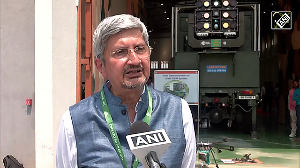India has a long history of mining for gold and references pertaining to old mine sites dating back to 200 years are available from official records.
But gold mining has not picked up in modern times in the country, due to a plethora of problems.
India is the largest importer and consumer of gold in the world; but gold mining remains at very low levels. The country imported an estimated 443 tonnes of gold during in the first six months of the current fiscal, valued at $5.82 billion.
But the country's domestic gold production was at 3.05 tonnes during the financial year 2006.
Faced with the low production of gold, the Indian government has asked domestic gold miners to actively explore joint venture with foreign companies to speed up exploration of the yellow metal within the country.
What is the process of exploration for gold deposits in India, and how it is done?
Following are the seven steps to gold mining in India.
1. Literature Survey: There are a number of government agencies that carry out verification surveys on gold mining in India. The main among them are Geological Survey of India and Mineral Exploration Corporation of India. These agencies have already carried out extensive regional and detailed surface and underground exploration for gold in different parts of the country.
The geological and exploration data generated by these agencies are available in several publications of theirs respective agencies. Collection of all this literature, which facilitates picking up of targets for further probing, forms the first step in exploration process.
2. Geological Mapping: Preparation of a good geological map of the area of interest, initially on a regional scale (1:50,000) by taking up number of field geological traverses, and with the help of aerial photographs and landsat imageries is generally the next step.
3. Identification of Gold Bearing Zones: This is done by collecting rock chip samples from favourable locales for gold mineralization while preparing the geological map of the area. If the rocks are not exposed, geochemical methods like stream sediment sampling, soil sampling can be adopted to identify gold anomalous areas.
Similarly geophysical methods can be deployed to locate any conductive or magnetic bodies below the soil cover. These targets will be explored by trenching and rock-chip sampling. Depending on the sampling results the target areas are demarcated for detailed sampling in three dimensions.
4. Three Dimension Sampling: Three dimension sampling of gold bearing zones is carried out by reverse circulation (RC) drilling and diamond core drilling. The RC drill is mounted on a truck and is easily mobile. The rock sample is obtained in the form of rock chips for every 1 m drilling.
The RC drill can drill up to 100m a day and works on compressed air. The mobility of a diamond core drill is slow. In diamond core drilling, the rock sample is obtained in the form of solid core. Approximately 20 to 25 m can be drilled in a day depending on the hardness of the rock formation.
5. Estimation of Global Resource: Based on the three dimension sampling of the gold-bearing zone (ore body), i.e. length, width, depth and grade, a global resource of the gold deposit is estimated.
6. Pre-feasibility exploration: The global resource is further worked upon by close spaced diamond core drilling along length and dip of ore body and sampling to improve the reliability of the global resource estimate. It also helps in ascertaining whether the deposit is mineable or not.
7. Feasibility Exploration: Feasibility exploration involves additional extensive sampling on surface and underground. An open pittable resource of reasonable dimensions has to be further sampled on surface by very closed spaced drilling, bench cutting and bench sampling to delineate the mineable reserves and to demarcate ore from waste.
A resource that could be exploited by only underground method of mining needs to be sampled by sinking shafts and developing ore body along its length. This sampling enables the delination of rich pockets of ore within the ore body and assessment of mineable reserves.







 © 2025
© 2025